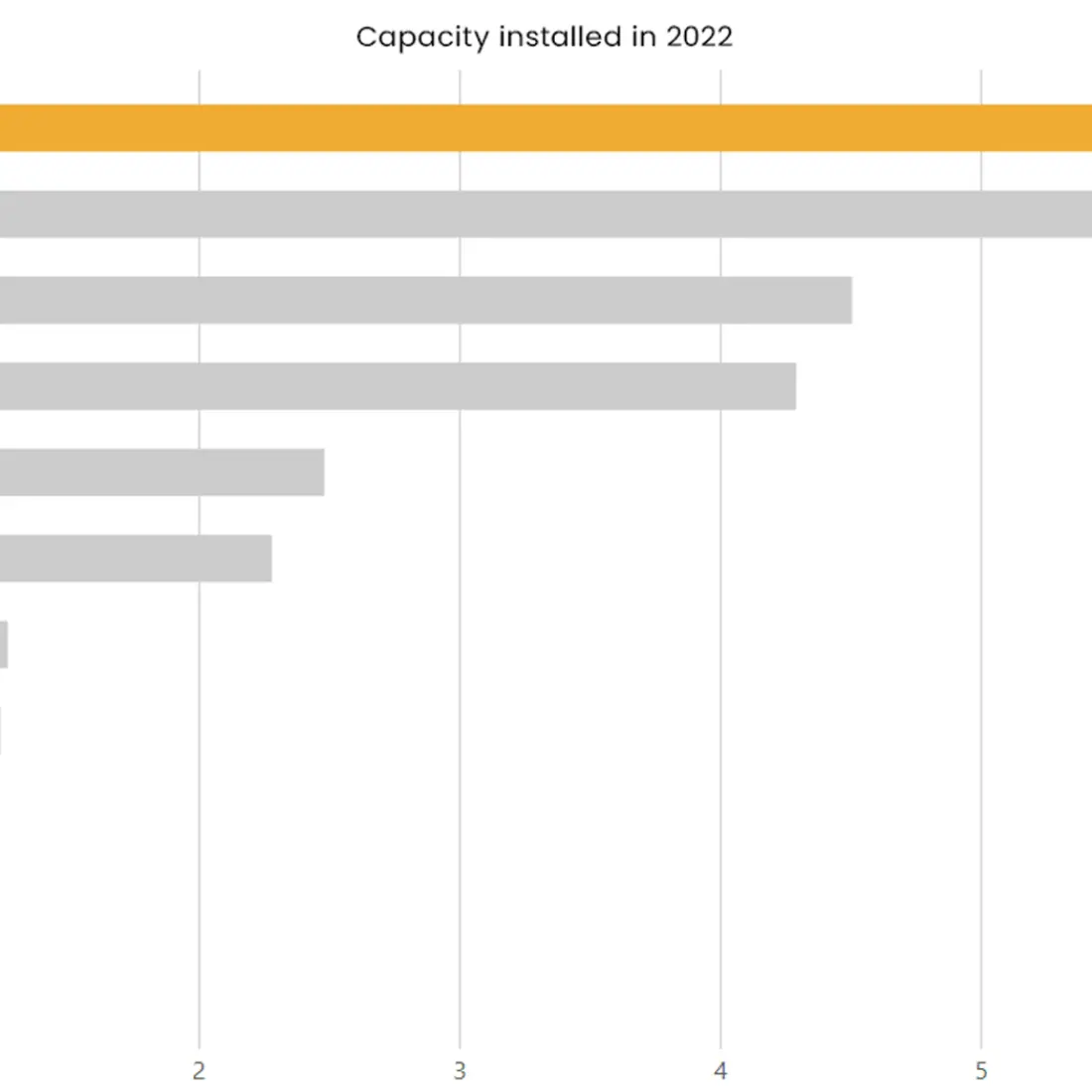Energyear Madrid 2023: key takeaways


On the 25 and 26 of April, PVcase traveled to Madrid for one of the most important events on the Spanish renewable energy event agenda: Energyear Madrid 2023. During this event, we not only had the opportunity to meet the large community of PVcase users in Spain, but we got to learn and discuss the current state of renewables in the country from the more than 900 participants coming from over 280 companies leading the charge on the energy transition in Spain.
Pains of Spain's exponential growth
The buzz around the growth of renewable energy, and in particular solar, was palpable throughout the conference. According to BloombergNEF (BNEF), Spain was the largest solar market in Europe in 2022, growing by 55% YoY and installing 7.3 GW of solar. This is just slightly more than Germany and 2.7 GW more than the third-largest EU market Poland. More than half of the capacity installed in Spain was utility-scale, but the share of rooftop solar has grown six-fold since 2018 after the Spanish government rolled back regulations that killed rooftop solar in the country. Its excellent climate for solar, positive economic outlook, and ambitious government that bets on the energy transition are driving things forward.

However, due to the breakneck speed at which Spain has returned to the global solar market map, the market needs to improve. These relate to regulatory, technical, and financial hurdles, mainly related to that hold it back from realizing its full solar potential.
Regulatory and investment uncertainty continues
While the Spanish government is undeniably responsible for Spain’s solar resurgence thanks to the approval in 2021 of the Climate Change Act, which set relatively ambitious targets for renewable energy and the removal of the so-called sun tax, Energyear speakers noted that regulatory uncertainty still plagues the Spanish solar sector.
The achievement of government targets has been boosted by high electricity prices and the largest solar PPA market in Europe, with 2.5 GW of PPA-financed solar projects in Spain at the end of 2022. But the windfall tax on renewable energy generator profits above 67€/MWh slowed down the PPA market as it has created regulatory uncertainty, reduced PPA revenues, and chilled investor return expectations. Asset owners have also been affected introducing a price cap on electricity generated by gas which created a disincentive for renewable energy generation.
To add another layer of investment uncertainty, as highlighted by Energyear panelists, the Spanish energy market is experiencing increasing curtailment. Curtailment occurs when there is a mismatch between supply and demand, leading to the need to reduce electricity generation from renewable sources. Panelists noted the need to hybridize PV projects with storage, lamenting the administration's slowness in laying out clear regulations and financing packages.
Ambition comes at a cost: EPC and human resource crunch
The most exciting instance of regulatory uncertainty in Spain was the sudden approval of renewable projects. Permitting processes were a significant bottleneck for solar projects in Spain, taking more than three years on average to secure environmental and grid connection permits. Sometimes this took even longer, as administrative bodies are completely swamped with requests because of chronic understaffing.
At the end of January 2023, the Spanish government approved the Environmental Impact Assessments (EIAs) of about 25 GW of solar projects, which already held grid connection rights and only needed a few more local permits before reaching "Ready To Build" status. The problem is that developers must obtain these permits and build their projects within two years, or they will otherwise lose their permits. This has created significant tensions in the administrations that must process permits, leading to an EPC and human resource crunch.
Throughout the event, Energyear panelists stressed the difficulty in finding available EPC contractors and professionals to build all the solar projects on time. As a result, EPC companies in Spain now have long project backlogs and can now choose which developers to work with, which may likely be driving an increase in EPC contract prices. However, we learned that workers from adjacent sectors, such as the oil and gas industry, are coming into solar. Still, they may need more expertise to deliver quality work. The challenge of onboarding and re-skilling engineering teams is a well-known but unavoidable issue as we head towards more than 1 million solar jobs by 2030.
Thanks to PVcase Academy, which compiles the combined experience of our engineering teams, PVcase clients ensure their staff can get up to speed with the latest best practices to design and engineer utility-scale PV plants. This has now been complemented by the digital release of SolarPower Europe’s Lifecycle Quality Guidelines for solar projects on the Solar Best Practices Platform. This platform creates a one-stop-shop with everything our sector has to teach, compiling the great content of SolarPower Europe’s EPC, O&M, Asset Management, and Lifecycle Quality Management Best Practice Guidelines and making it readily available in a web-based format.

Solar’s final frontier: embracing digital technologies
Several panels at Energyear centered on how solar is embracing digital technologies by consolidating existing technologies and bringing innovations that improve plant performance, speed up design and engineering times or increase the efficiency of operations and maintenance tasks. Energyear panelists discussed state of the art in applying Artificial Intelligence (AI) and Machine Learning (ML), advances in predictive maintenance, the use of Building Information and Modelling (BIM) in ground mount solar projects, Internet of Things (IoT), and integrating on-site installation crews with digital systems.
Despite the wide variety of digital technologies panelists spoke about, data quality was identified as a common challenge. As soon as digitalization topics were approached, similar issues were evoked, like a lack of data standardization within the solar sector, challenges in collecting reliable data from field installations, and ensuring datasets are clean, with no errors and time shift - if plant data is available. And without robust and trustworthy data, solar’s marriage with digital technologies is unlikely to have a future.
Digital twins could be the stepping stone toward high-quality data, and PVcase is leading discussions on how to address this. As part of the Horizon 2020-funded Trust-PV project, PVcase developed and demonstrated a framework for utility-scale solar PV digital twins based on PVcase Ground Mount and PVcase Yield inputs. By matching these with as-built documentation or aerial imagery of tangible assets, we can generate a digital twin that acts as a reliable primary source of PV assets. This single source of truth could increase transparency and facilitate data exchange about solar assets, supporting the development of robust data that enables AI and ML technologies and predictive maintenance. Furthermore, digital twins could help streamline engineering processes throughout the solar PV asset lifecycle by acting as a central information exchange node on the plants.
Schedule a demo of PVcase software here.